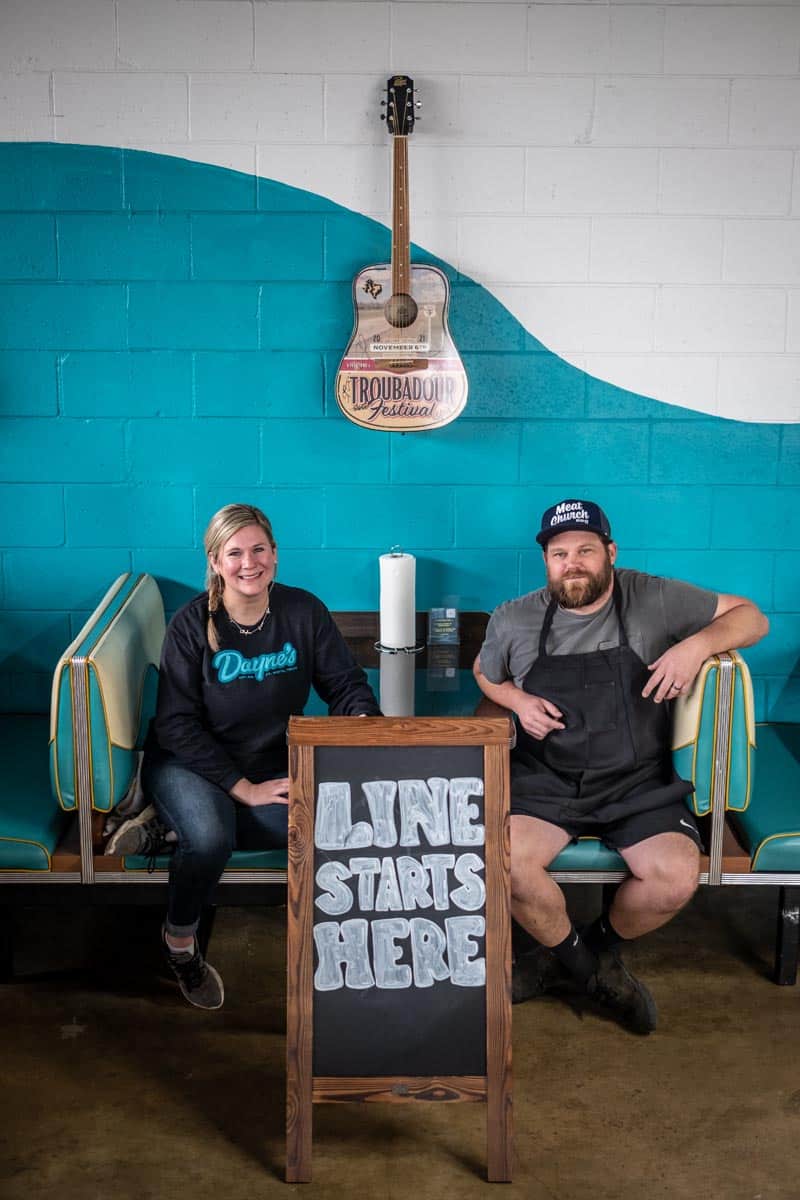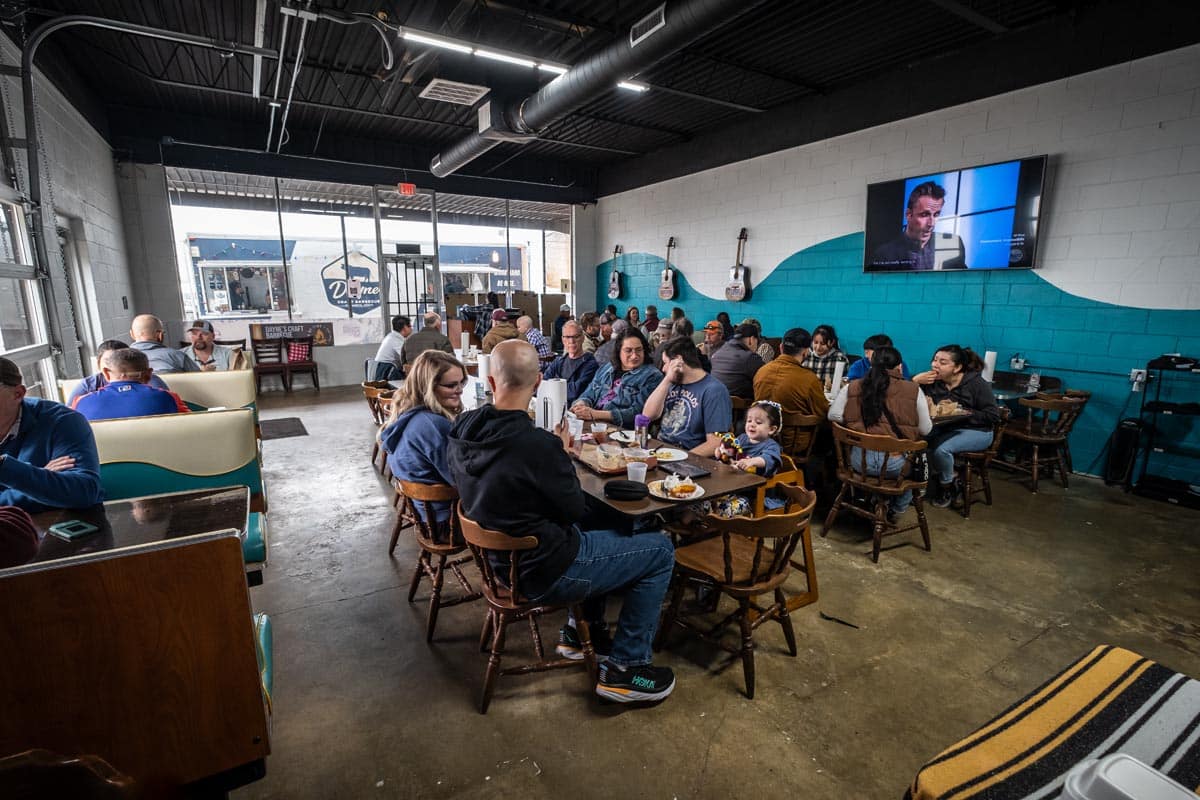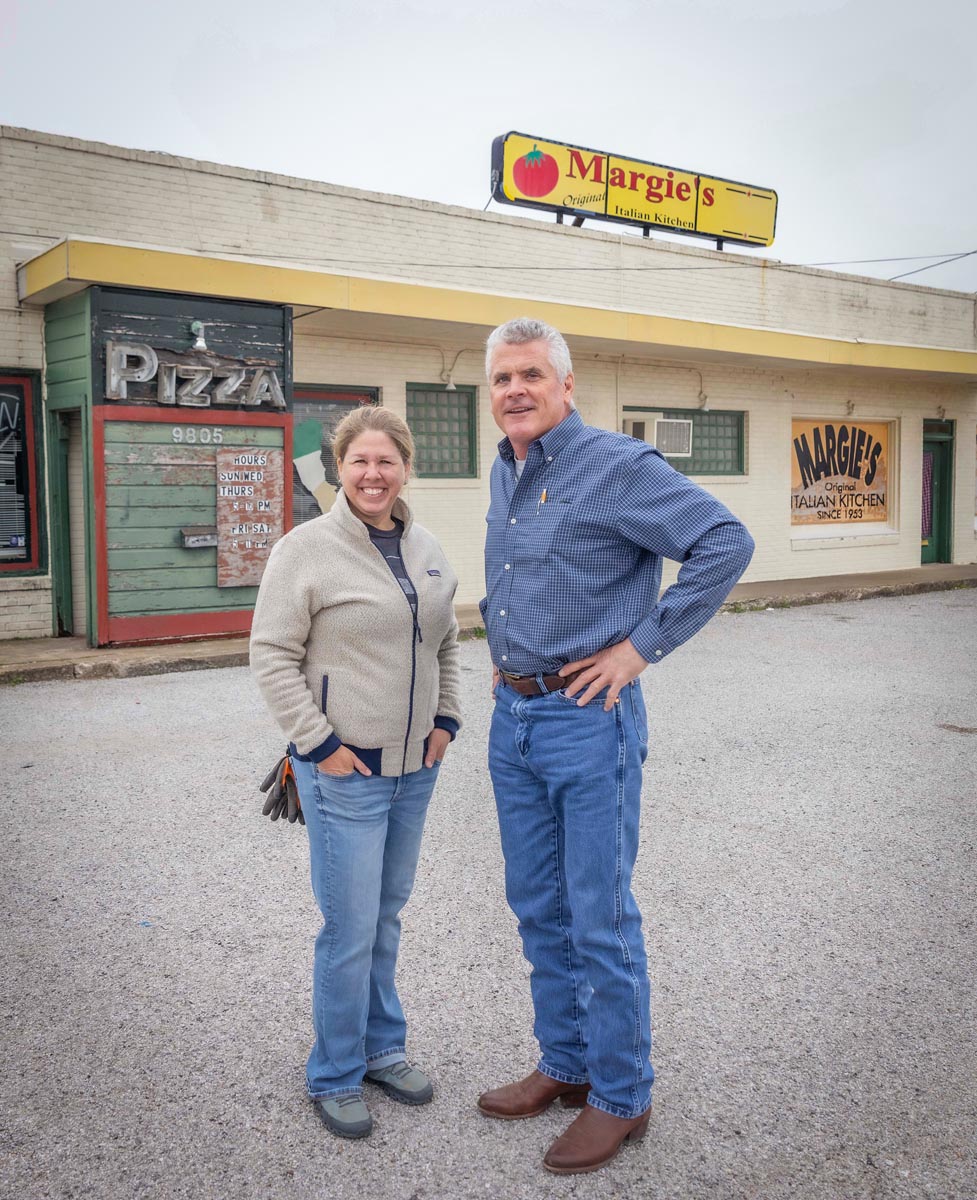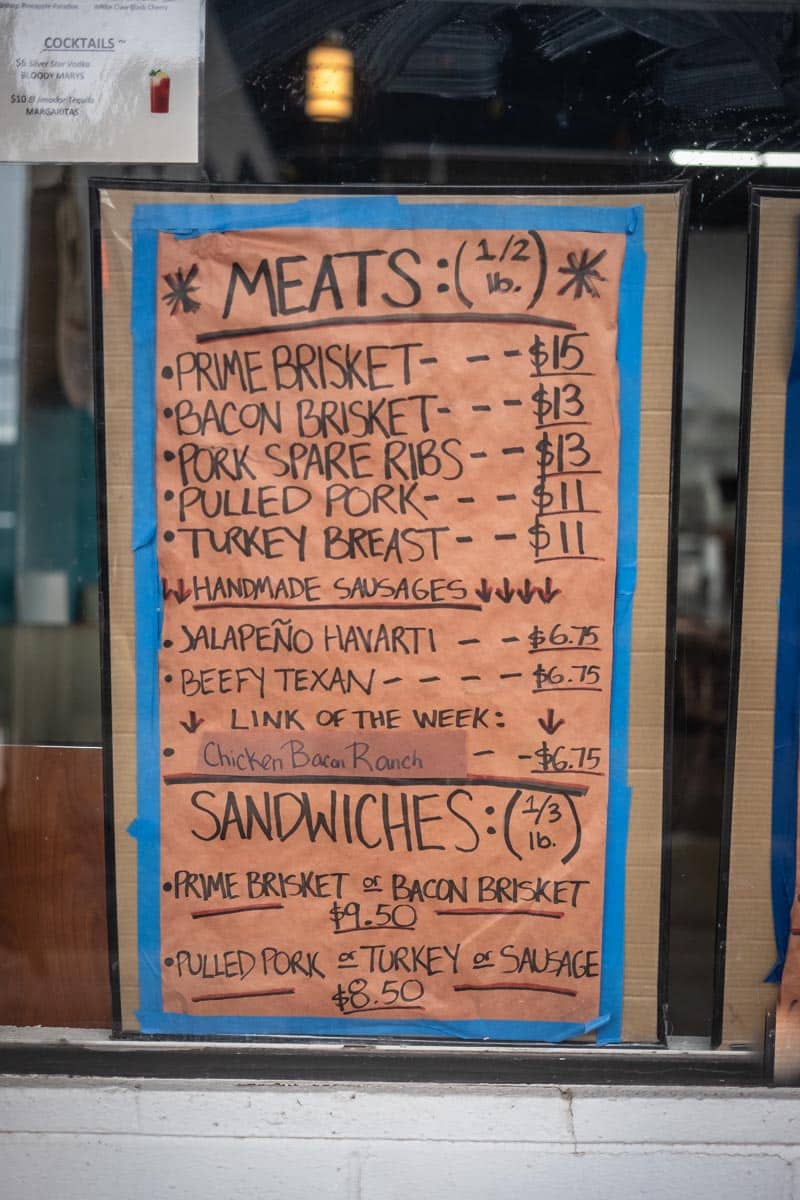
What’s Next for Westland
By Tori Couch
Photography by Olaf Growald
More restaurants are on the menu for this stretch of Highway 80, a piece of West Fort Worth’s rich history
Sitting on the back patio at JD’s Hamburgers, co-owner Gigi Howell recalls the Westside Fort Worth neighborhood of Westland as having a very different feel in the 1970s than it does today.
As a child, Howell visited the convenience store across the street, bought rocks from a rock store instead of grabbing one from Mary’s Creek and spent time with family off Kenwood Avenue in homes that relatives had built decades prior.
“There was a lot going on,” Howell says. “It was kind of like Jacksboro Highway and Highway 80 were the places to be back then.”
That activity waned in Westland — a six-mile stretch of Highway 80 west of what today is Loop 820 — as the interstates and new roads pulled traffic away and population growth made ranching and farming harder.
But Howell, a Fort Worth restaurant industry veteran, has not forgotten Westland, especially when it comes to Margie’s Original Italian Kitchen. She practically lived at the 70-year-old restaurant, because her mother, uncle and aunt worked there.
“We dined there constantly,” Howell says. “I thought Margie was my grandmother until I was about 10. I thought I was Italian.”
Earlier this year, Howell, along with friend and business partner Bourke Harvey, another Fort Worth restaurateur, announced they bought Margie’s with additional partners and plan to reopen it after a refresh. Last September, the partnership opened JD’s Hamburgers, which is next door to Margie’s and named for Howell’s grandfather.
These new pursuits are just the start of a vision focused on bringing activity back to Westland and making it a dining destination. Harvey said in an interview he hopes to open four or five restaurants with shared amenities like parking.
Howell, Harvey and their partners aren’t alone in the revitalization.
Fort Worth’s Murrin family, longtime ranchers in the Westland area, are also serving as catalysts for the revitalization.
Philip Murrin is seeking new tenants for the shopping center across from Margie’s and JD’s that his grandfather Steve Sr. built in 1951. One recruit, Dayne and Ashley Weaver, owners of Dayne’s Craft Barbecue, a Texas Monthly Top 50 Barbecue pick, moved into the center last summer. The couple are operating out of a food truck at the center for now but plan to occupy a 5,000-square-foot space there.
Murrin remembers when Westland residents used that shopping center daily. “It’s the history that’s driving the revitalization,” Murrin says. “This used to be really cool.”
What’s Next on Westland’s Menu
Within two to three years, Harvey says he plans to open a Mexican restaurant behind Margie’s in a church building he is under contract to purchase.
Harvey says Longvue Baptist Church will move to land he has purchased elsewhere.
He also plans to renovate the abandoned gas station next to Margie’s and make it an indoor-outdoor bar.
With multiple restaurants near each other, Harvey envisions customers being able to walk between restaurants and having options if their first choice is full or has a long wait.
“We want to be appealing to every single demographic out there,” Harvey says. “Whether you’re the 90-year-old person who lived your whole life in Westland or you’re someone coming from downtown Fort Worth and want to have good service and a cool environment.”
Harvey started investing in Westland when he opened Westland Gardens, a plant nursery behind Margie’s, with his wife, Stephanie, Holman Harvey and Joanna and Brendan Bennett, a group known as Westland Texas Investments, LLC.
The nursery offers produce, seasonal flowers, succulents and seeds from famous Texas trees. Harvey used to own a tree farm in East Texas.
The garden’s June 2020 startup foreshadowed more movement from Harvey, since he had already built relationships with nearby business owners. Westland Texas Investments helped purchase JD’s Hamburgers.
Harvey and Howell met nearly 30 years ago, when he hired Howell’s mother at one of his first Jason’s Deli locations. The younger Howell left such an impression that Harvey says he knew they would work together someday.
Harvey eventually opened Jason’s franchises in five states, and Curly’s Frozen Custard and Rogers Roundhouse in Fort Worth. Howell’s 35 years in restaurants include 21 with Reata Restaurant. She recently ran the restaurant’s fast-casual dining option, 203 Café, in downtown Fort Worth.
Harvey found a way Howell could get plugged into the Westland plan as a restaurant owner and help revitalize her childhood neighborhood.
“I always wanted to have a restaurant,” Howell says. “The fact that I’m getting to do it here where all my family grew up is unbelievable.”
Westland’s Rich History
Westland became an overnight stop for highway travelers during the heyday of the old coast-to-coast Bankhead Highway, which took the Highway 80 segment through the neighborhood.
The shopping center provided locals and tourists easy access to essential amenities.
The highway, named for Alabama Sen. John H. Bankhead, was the main southern route between Washington, D.C., and California during the 20th century. Bankhead mapped out the then dirt road before he died in 1920.
More than 850 miles of the highway passed through Texas, stretching from Texarkana to El Paso. As more people traveled west, the government paved the road.
“Bankhead wanted a better road across the South,” says Dan L. Smith, a retired Bankhead historian who spent 20 years mapping the Texas section and wrote The Bankhead Highway in Texas. “That was the only way the South could come back to life and actually begin to do things.”
The Bankhead remained a main roadway for several decades, but as traffic increased and people moved west, additional roads were built. Portions of the highway were renamed, moved or cut through by new roads, Smith says. The interstates’ introduction in the 1960s and ’70s provided a new route as well.
As the area surrounding Westland became less rural, farming and ranching struggled, leading to additional changes to the Highway 80 business mix. Murrin noticed this trend during the 1990s and 2000s.
“As that way of life was less prevalent, those kinds of people were not around there anymore,” he says. “Russell Feed went less from selling cattle feed and horse feed to pet food and collars for Fifi. It’s just an evolution.”
That evolution left behind buildings and memories of a different era, but the past has remained alive through the efforts of multiple people — including a Westland TX History Facebook group and a 125-page book by Ria Hendrix that offers historical context about the people, buildings and events that shaped the neighborhood. The book even mentions a Westland drive-in movie theater that opened in August 1966.
Westland Catalysts: Harvey and Murrin
Harvey and Murrin have spearheaded the revitalization of Westland, even if the paperwork says otherwise.
Over a decade ago, the pair met for lunch at Fort Worth’s West Side Cafe and agreed Westland needed a boost. Creating a new partnership with a family-owned asset proved too difficult, but the two pursued the common goal through separate ventures.
Recent population growth in nearby Parker County and surrounding neighborhoods such as Walsh, Ventana, Benbrook, Chapel Creek, Morningstar and Montrachet, plus easy access off Interstate 20 and Loop 820, boosted Westland as a location for new restaurants.
“There’s nothing to serve them,” Harvey says. “Why can’t we bring back Westland to the way it was?”
Howell and Murrin remember Westland when it was still a busy farming community in the 1970s. Murrin’s family started ranching there in the 1930s and still own those ranches.
Murrin recalls eating lunch in the shopping center’s grocery store with the family’s ranch hand every summer. He spent countless hours at Margie’s, too, eating Sunday dinner in the back room.
The businesses housed in the Murrins’ shopping center changed over the years, but the names always encapsulated a friendly neighborhood vibe — John Snyder’s Barber Shop, Caudle’s Grocery, Humlick’s Cabinet Shop, Mr. Greenfield’s Drug Store and Russell Feed & Supply and Mr. Kirkham’s Dry Cleaners, to name a few.
Murrin has spent several years bringing his grandfather’s shopping center back to life.
The 25,000-square-foot building became a family warehouse of sorts as tenants left. Murrin cleaned it out after returning to Fort Worth in 2005. He later brought in John Proffitt Home, a furniture store, and identified Dayne’s as the “food anchor.” Tommy’s Boats is another tenant.
Filling in the rest of the spaces will take time, Murrin says. He’s thinking about neighborhood-driven additions like a local grocery store. The building’s overall look will remain the same, he says.
“It’s part of what we’re trying to tell and a new building can’t do that,” Murrin says. “I think it’s gonna be a fun process.”
Murrin hopes to bring back the old neighborhood feeling.
“It’s a diligent pursuit of the right thing,” he says. “We’re very fortunate we can do that.”
Recruiting Dayne’s
That approach brought in Dayne’s. It relocated after spending a couple years on West 5th Street in Fort Worth next to Lola’s Trailer Park. After Lola’s moved to West Berry Street, the Murrins offered the Weavers a space in Westland.
“This seemed like an area that was underserved for barbecue,” says Dayne Weaver, who started selling barbecue five years ago in his front yard, got the food truck in 2020 and then found a temporary home with Lola’s.
Murrin found the barbecue truck while rebuilding staff at his family’s River Ranch Stockyards venue in Fort Worth during COVID-19. He viewed Dayne’s as the standard for barbecue and wanted to replicate it. Murrin sent his executive chef to visit Dayne’s at Lola’s.
“He called me from there after his first bite and said, ‘We don’t need to emulate this guy. We need this guy,’” Murrin says. “I said, ‘OK.’”
The Weavers are working out details with the Murrins for their permanent space in the shopping center. It should provide a total seating capacity of about 250, Dayne Weaver says. He envisions smokers on display out front where customers can see their food being cooked.
Fans of Dayne’s quickly caught on to the couple’s move and have lined up daily outside the food truck at the shopping center. Customers today can sit at tables inside a temporary dining room. The Weavers ordered more high chairs to make the space more family-friendly.
The permanent space will let Weaver serve a larger customer base and take advantage of more catering opportunities.
The restaurant will feature pictures of historic Westland and the Bankhead.
“You can tell it was a really happening area,” says Weaver, who, with his wife, has been tutored on the area’s history by the Murrins. “We’re excited to try and preserve as much as we can of the history.”
Since moving, the Weavers have added a fourth day of operation and open a bit earlier than before, at 10:30 a.m.
Customers have expressed gratitude to the Weavers for investing in Westland, the couple say.
“It’s authenticity,” Ashley Weaver says. “We care about the people that support us and I feel that they feel the same way about us. It’s definitely stemming from this community.”
The Weavers have watched JD’s Hamburgers gain a foothold, too.
“They’ve been rocking and rolling,” Dayne Weaver says. “It’s been really cool to see the parking lot filled up over there. Then, it even overflows across the street into Margie’s parking lot.”
JD’s Hamburgers went quiet for a six-week stretch after a March 2 thunderstorm “peeled the roof back like a sardine can,” Howell says. The debris ended up on a nearby lot. Only the roof over the restroom remained intact. The kitchen, housed in a separate shipping container on a concrete slab, did not sustain damage.
Seeing a chance to help a friend and fellow restaurateur, the Weavers and their staff provided lunch as the cleanup began.
“Customers are putting on their gloves, saying, ‘How can I help?’” Harvey says. “They’re hauling out old insulation to the dump. How cool is this?”
JD’s reopened its patio April 13 for evenings only; the main building continues to be renovated. Harvey says the goal is for JD’s to be fully open in August or September.
Howell trusts business will pick back up based on the constant flow of customers through the first six months. The burgers won awards at the 2022 and 2023 Fort Worth Food + Wine Festivals.
Building up the community is a joint effort between the residents and business owners, Howell says.
“You want to improve the surroundings and make the people who live here feel like these people are really coming in and helping the area,” she says.
Gigi Howell and Bourke Harvey took ownership of Margie’s Original Italian Kitchen in March 2023. The restaurant will undergo renovations and upgrades before being reopened. Howell and Harvey also opened JD’s Hamburgers next door in September 2022. Over the next few years, Harvey plans to open more restaurants in an effort to help revitalize Westland. Photo by Jill Johnson.
From Dive Bar to JD’s
Harvey and Howell stepped into Westland together nearly three years ago when they bought the location for what is now JD’s.
The building used to be a dive bar named Last Call. Harvey built a relationship with the owner by visiting his office every six months for several years.
When the owner passed away, the business manager called Harvey, offering him first refusal on the building. Harvey’s team took it over in 2021.
Howell had been investigating another potential restaurant spot outside of Westland when Harvey called. After one look at the abandoned dive bar, Howell knew it was the right spot, despite the work that would be necessary.
“This was just it,” Howell says. “I knew as soon as I walked in. Anybody else would have been like ‘I’m outta here.’”
Around that same time, Harvey told Howell that he hoped to buy Margie’s. He had already spent several years getting to know the owner, Keith Kidwell. When Howell explained all her family connections, Harvey felt an even stronger pull toward the restaurant. Harvey and Howell bought Margie’s in March 2023.
A definitive timeline has not been set for reopening Margie’s, but Harvey says he hopes it will happen by year’s end. The partners will first make cosmetic improvements and other updates to the 2,000-square-foot, 120-seat building, including new HVAC and electrical systems.
Preserving as much of the restaurant’s history as possible remains a high priority. The paneling out front will get a fresh coat of paint, but the markings will remain as reminders of the past.
Harvey, like Howell, tabs Margie’s as his favorite childhood restaurant.
“We wanted to be respectful of the community Westland was back in the ’50s and ’60s, and also the structures that were here,” Harvey says.
Howell knows Margie’s son, Doyle, and has heard stories about how Margie and her mother, Tina, got started.
The women would purchase food at the grocery store across the street every morning, serve lunch and dinner, and take a brief break in between to eat.
After cleaning up the restaurant, Tina and Margie would walk home, put a young Doyle to bed, clean and fold rags for use the following day, sleep and then repeat the process.
“Doyle said at one point he asked his mom, ‘Why did you do this here? Why didn’t you go back to the old country where you had family?’” Howell says. “She said, ‘Because I wanted my son to be raised in America. I wanted him to be in America.’ That’s what it took to do that back then and they did it without a complaint.”
Now Howell and Harvey are tasked with sharing those memories and that history.
Howell is keeping her family legacy alive through JD’s. The menu features items named for family members or based on family recipes.
Guests feel comfortable reminiscing about the old Westland and even share stories about JD. Howell recalls one gentleman whose father knew her grandpa well.
“He said, ‘So, JD’s your grandaddy?’ and I said, ‘Yeah,’” Howell says. “‘Oh, [JD] and my daddy used to hang out all the time at the coffee shop.’ That’s where all the old men would go trying to solve the world’s problems.”
Westland’s future will have a modern flair, but the past can speak through every venture.
Harvey had Anchor Media create a Westland logo. It can be seen on a white flag on the patio at JD’s and says “Welcome to Westland Texas, USA.”
Westland “kind of got lost in time,” Murrin says. “That’s what makes it so cool. Because it got lost in time, there’s this opportunity to lock into what’s cool and bring it back to something that’s cool.”




